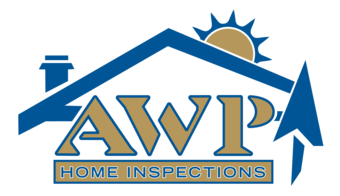Are you struggling with mold issues in your home? Mold growth can be particularly troublesome during the summer months when humidity levels rise both outdoors and indoors, creating the perfect conditions for mold to thrive. But fear not! Now is the ideal time to take action and effectively combat mold growth while safeguarding your home from its return.
In recognition of Mold Awareness Month, we’ve reached out to Michael Rubino, a mold and air quality expert and the founder of HomeCleanse. He shares valuable insights on how to reduce mold growth and maintain a clean, safe, and healthy living environment throughout the year.
Understanding the Impact of Mold
Mold, a ubiquitous type of fungus, often goes underestimated in terms of its impact on our health and well-being. Mold reproduces by releasing microscopic spores into the air, which can land on various surfaces. According to Rubino, the average person breathes in thousands of breaths daily and spends a significant amount of time indoors. If your indoor environment contains high toxin levels, you could be exposing yourself to a range of health issues, including respiratory problems and a weakened immune system.
Effective Strategies to Reduce and Prevent Mold
Step 1: Maintain Your HVAC System
Rubino refers to the HVAC system as the “lungs of the home.” Regular servicing of your HVAC system, at least twice a year, is essential to prevent mold growth and related issues. Condensation buildup can create a hidden breeding ground for mold, making thorough cleaning by an experienced technician crucial. Switching to high-rated MERV filters appropriate for your HVAC system helps eliminate microscopic contaminants, including mold spores. Additionally, timely filter replacements, as per the manufacturer’s instructions, are vital.
Rubino also advises regular maintenance of AC window units, which can accumulate dirt, debris, and outdoor bacteria. Cleaning these units at least twice a year, before and after the peak usage season, along with filter changes and humidity settings adjustments, are key steps in mold prevention.
Step 2: Consistent Cleaning
Maintain a cleaning schedule tailored to daily, weekly, monthly, bi-annual, and annual tasks to stay ahead of mold prevention. Tasks such as cleaning up water and condensation around sinks and showers should be daily priorities, while monthly cleaning of door frames and cabinets helps. Additionally, vacuuming your mattress, reducing clutter, keeping appliances clean and dry, and properly disposing of spoiled food are essential measures. When it comes to cleaning products, Rubino recommends natural options like Benefect Decon 30 Disinfectant Cleaner, EC3 Laundry Additive & Mold Spray, HEPA vacuum cleaners, and microfiber towels to promote healthier indoor air quality and reduce the risk of microbial growth.
Step 3: Maintain Optimal Moisture Levels
Mold can take hold on wet surfaces within 24 to 48 hours, making moisture control a critical factor in preventing its growth. Aim for indoor humidity levels between 35 and 50 percent to deter microbial growth, poor indoor air quality, and structural problems. Use a hydrometer to monitor humidity levels, keep windows and doors closed while using the AC to prevent condensation, and use exhaust fans and increased air circulation when showering. Promptly address standing water, fix leaks, and reduce carpeting, which tends to retain moisture.
Step 4: Invest in Air Purification
Air purifiers can effectively reduce airborne contaminants, improving indoor air quality. Rubino recommends whole-home air purifiers, which can be installed at the point of entry to filter particles throughout your home. These systems not only enhance air quality but also protect your HVAC system by eliminating contaminants before they enter it.
Remember, by implementing these proactive measures, you can create a mold-free, healthy living environment for you and your family. As the saying goes, “An ounce of prevention is worth a pound of cure.”
AWP Home Inspections offers inspection services to customers in West Central and Central Indiana. Contact us to schedule an appointment.

